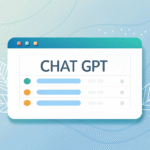Now Reading: The best free apps for students in 2025: Essential tools for academic success
-
01
The best free apps for students in 2025: Essential tools for academic success
The best free apps for students in 2025: Essential tools for academic success
Student life in 2025 is increasingly digital, with technology playing a crucial role in academic success. Whether you’re managing coursework, collaborating on projects, or preparing for exams, having the right apps can make the difference between struggling and thriving. This comprehensive guide covers the best free apps every student should have, organized by category to help you build the perfect digital toolkit for academic excellence.
a. Productivity and organization apps
1. Notion – Your digital second brain
Notion stands out as the ultimate productivity powerhouse for students. This all-in-one workspace combines note-taking, task management, databases, and collaboration tools in a single platform.
Key Features:
. Create comprehensive note-taking systems with linked databases
. Build custom study schedules and assignment trackers
. Template gallery with hundreds of student-specific layouts
. Real-time collaboration for group projects
. Cross-platform synchronization across all devices
Best for: Students who want to organize their entire academic life in one place, from class notes to project management.
Availability: Free for personal use with generous limits; students can access premium features through education plans.
2. Google keep – Quick capture and reminders
Google Keep excels at capturing quick thoughts, reminders, and ideas on the go. Its simplicity makes it perfect for busy students who need immediate access to information.
Key features:
. Voice memos that automatically transcribe to text
. Color-coded organization system
. Location-based reminders for campus activities
. Photo capture with text extraction
. Integration with Google Workspace ecosystem
Best for: Quick note capture, homework reminders, and maintaining to-do lists.
3. Mystudylife – Student planner
MyStudyLife functions as a comprehensive digital planner specifically designed for students. It helps manage class schedules, assignments, and exam preparation in one integrated system.
Key features:
. Class schedule management with automatic notifications
. Assignment tracking with deadline alerts
. Grade tracking and GPA calculation
. Exam countdown timers
. Cloud synchronization across devices
Best for: Students who need structured academic planning and schedule management.
4. Todoist – Task Management Excellence
Todoist transforms chaotic task lists into organized, actionable workflows. Its project-based approach works perfectly for managing multiple courses simultaneously.
Key Features:
- Project organization for different classes
- Priority levels (p1-p4) for deadline management
- Natural language processing for quick task entry
- Google Calendar integration
- Collaboration features for group projects
Best For: Students juggling multiple courses with complex assignment schedules.
Note-Taking and Study Apps
5. Microsoft OneNote – Digital Notebook System
OneNote provides a flexible digital notebook experience with powerful organization capabilities. As part of Microsoft’s education offerings, it’s free for students with comprehensive features.
Key Features:
- Hierarchical organization with notebooks, sections, and pages
- Handwriting recognition and drawing tools
- Audio and video recording capabilities
- Real-time collaboration and sharing
- Integration with Microsoft Office suite
Best For: Students who prefer structured note-taking with multimedia integration.
Student Benefits: Free access through Microsoft 365 Education, which provides desktop and web versions.
6. Obsidian – Connected Knowledge Management
Obsidian creates a web of interconnected notes, perfect for students who want to build comprehensive knowledge systems across subjects.
Key Features:
- Bidirectional linking between notes
- Graph view to visualize knowledge connections
- Markdown-based editing
- Extensive plugin ecosystem
- Local file storage for privacy
Best For: Advanced students building long-term knowledge bases across multiple subjects.
7. Evernote – Multimedia Note Organization
Evernote excels at capturing and organizing diverse content types, from text notes to web clippings and document scans.
Key Features:
- Web clipping with full-page capture
- Document scanning with text recognition
- Tag-based organization system
- Powerful search across all content types
- Cross-platform accessibility
Best For: Research-intensive courses requiring diverse source material organization.
Educational and Learning Apps
8. Khan Academy – Comprehensive Free Education
Khan Academy provides world-class education completely free. With content spanning multiple subjects and grade levels, it’s an invaluable resource for supplementary learning.
Key Features:
- Video lessons across math, science, history, and more
- Interactive practice exercises with instant feedback
- Personalized learning dashboard
- Progress tracking and achievement badges
- Offline video downloads for mobile learning
Best For: Students seeking additional explanation of concepts or exam preparation.
9. Duolingo – Language Learning Gamified
Duolingo transforms language learning into an engaging, game-like experience. Its bite-sized lessons fit perfectly into busy student schedules.
Key Features:
- Gamified learning with streaks and achievements
- Multiple language options (Spanish, French, German, etc.)
- Adaptive difficulty based on performance
- Speaking and listening practice
- Social features for motivation
Best For: Students learning foreign languages or maintaining language skills.
10. Coursera – University-Level Courses
Coursera offers access to courses from top universities and companies worldwide. Many courses are available for free, with optional paid certificates.
Key Features:
- Courses from Stanford, MIT, Google, and other prestigious institutions
- Video lectures from expert instructors
- Peer-reviewed assignments and discussions
- Financial aid available for paid certificates
- Mobile app for learning on the go
Best For: Students seeking advanced courses beyond their curriculum or professional skill development.
11. Quizlet – Interactive Study Tools
Quizlet makes memorization engaging through flashcards, games, and practice tests. Its collaborative features enable study groups and shared resources.
Key Features:
- AI-powered flashcard creation
- Multiple study modes (flashcards, matching, tests)
- Collaborative study sets for group learning
- Spaced repetition algorithms
- Offline study capabilities
Best For: Memorization-heavy subjects like vocabulary, historical dates, or scientific terms.
Google Workspace for Education – Complete Suite
12. Google Classroom – Course Management
Google Classroom streamlines the educational workflow between teachers and students. It’s free for educational institutions and provides comprehensive course management.
Key Features:
- Assignment distribution and submission
- Real-time feedback and grading
- Class discussion forums
- Google Drive integration for file management
- Mobile app for on-the-go access
Best For: Schools using Google’s educational ecosystem.
13. Google Docs, Sheets, and Slides – Collaborative Office Suite
Google’s office suite provides powerful collaborative tools essential for group projects and assignments.
Key Features:
- Real-time collaboration with multiple users
- Commenting and suggestion modes
- Version history and revision tracking
- Offline editing capabilities
- Seamless sharing and permission management
Best For: Collaborative writing, data analysis, and presentation creation.
14. Google Drive – Cloud Storage
Google Drive offers 15GB of free storage with seamless integration across Google’s educational tools.
Key Features:
- Automatic synchronization across devices
- File sharing with granular permissions
- Advanced search capabilities
- Integration with third-party educational apps
- Mobile scanning through Google Drive app
Best For: Storing and accessing academic files from anywhere.
Creative and Design Apps
15. Canva – Design Made Simple
Canva democratizes design, making it accessible for students to create professional-looking presentations, posters, and social media content.
Key Features:
- Thousands of professional templates
- Drag-and-drop design interface
- Extensive library of images, icons, and fonts
- Collaboration tools for team projects
- Brand kit for consistent design elements
Student Benefits:
- K-12 students get Canva Education completely free with premium features
- University students can access Canva Free or may qualify for Canva for Campus through their institution
Best For: Creating presentations, infographics, social media content, and academic posters.
16. Adobe Express – Creative Suite Alternative
Adobe Express provides powerful creative tools specifically designed for educational use. It’s completely free for K-12 education with robust features.
Key Features:
- Generative AI tools for image creation
- Video editing and animation capabilities
- Thousands of educational templates
- Safe search and content filters for K-12
- Real-time collaboration and feedback tools
Best For: K-12 students and teachers creating multimedia content for projects and presentations.
Communication and Video Apps
17. Zoom – Video Conferencing Leader
Zoom has become essential for virtual learning and group collaboration. The basic plan provides substantial functionality for students.
Key Features:
- HD video and audio quality
- Screen sharing capabilities
- Breakout rooms for small group work
- Recording functionality (with paid plans)
- Cross-platform compatibility
Free Plan Limitations: 40-minute time limit for group meetings, unlimited for one-on-one calls.
Best For: Virtual study groups, online classes, and remote collaboration.
18. Discord – Community Building
Originally designed for gaming, Discord has become popular among student communities for organizing study groups and academic discussions.
Key Features:
- Voice and text channels for different topics
- Screen sharing and video calls
- Bot integration for productivity features
- Mobile and desktop apps
- Server organization for different courses or groups
Best For: Building study communities and maintaining ongoing academic discussions.
Focus and Time Management Apps
19. Forest – Gamified Focus Sessions
Forest combines productivity with environmental consciousness, helping students maintain focus while contributing to real tree planting.
Key Features:
- Pomodoro technique timer with visual feedback
- Virtual forest that grows with consistent study sessions
- Real tree planting through partnership with tree-planting organizations
- Statistics tracking for focus time
- Whitelist for educational apps during focus sessions
Best For: Students struggling with phone distractions during study sessions.
20. Toggl Track – Time Management Analytics
Toggl Track provides detailed insights into how students spend their time, helping optimize study schedules and identify productivity patterns.
Key Features:
- Automatic time tracking with detailed categorization
- Pomodoro timer integration
- Calendar synchronization
- Detailed reports and analytics
- Cross-platform functionality
Best For: Students who want to analyze and optimize their time management habits.
Financial and Budgeting Apps
21. Mint – Personal Finance Management
Mint helps students manage limited budgets by tracking expenses, setting financial goals, and monitoring spending patterns.
Key Features:
- Bank account and credit card integration
- Automated expense categorization
- Budget creation and monitoring
- Bill reminder notifications
- Credit score monitoring
Best For: Students learning to manage personal finances and track educational expenses.
Mental Health and Wellness Apps
22. Insight Timer – Meditation and Wellness
Insight Timer provides free meditation resources to help students manage stress and maintain mental well-being.
Key Features:
- Thousands of free guided meditations
- Sleep stories and music
- Customizable meditation timers
- Community features and group sessions
- Progress tracking and statistics
Best For: Students dealing with academic stress and seeking mental health support.
Specialized Academic Apps
23. Photomath – Math Problem Solver
Photomath revolutionizes math learning by providing step-by-step solutions to mathematical problems through camera recognition.
Key Features:
- Camera-based problem recognition
- Step-by-step solution explanations
- Multiple solution methods
- Graphing capabilities
- Offline functionality
Best For: Students struggling with mathematics or seeking to verify their work.
24. Wolfram Alpha – Computational Intelligence
Wolfram Alpha serves as a computational knowledge engine, providing expert-level answers across multiple academic disciplines.
Key Features:
- Step-by-step solutions for complex problems
- Data analysis and visualization
- Multiple subject coverage (math, science, engineering)
- Natural language query processing
- Mobile and web accessibility
Best For: STEM students working with complex calculations and data analysis.
25. Mendeley – Research Management
Mendeley streamlines the research process by organizing academic papers, generating citations, and facilitating collaboration.
Key Features:
- PDF organization and annotation
- Automatic citation generation
- Collaboration tools for research groups
- Social networking for researchers
- Integration with Microsoft Word
Best For: Students engaged in research projects requiring extensive source management.
Scanning and Document Apps
26. Microsoft Lens – Document Scanning
Microsoft Lens (formerly Office Lens) transforms smartphones into powerful document scanners with intelligent processing.
Key Features:
- Automatic edge detection and cropping
- Text recognition and extraction (OCR)
- Integration with Microsoft Office apps
- Cloud storage synchronization
- Multiple file format export options
Best For: Digitizing handwritten notes, whiteboards, and printed documents.
27. Adobe Scan – Professional Document Scanning
Adobe Scan provides professional-quality document scanning with advanced text recognition capabilities.
Key Features:
- High-quality PDF creation
- Automatic text recognition
- Cloud storage integration
- Batch scanning capabilities
- Document editing and annotation
Best For: Creating high-quality digital copies of important academic documents.
Language and Writing Apps
28. Grammarly – Writing Enhancement
Grammarly improves writing quality through real-time grammar checking, style suggestions, and tone analysis.
Key Features:
- Real-time grammar and spelling correction
- Style and tone suggestions
- Plagiarism detection (premium feature)
- Integration with browsers and applications
- Writing statistics and progress tracking
Best For: Students writing essays, reports, and academic papers.
29. Hemingway Editor – Writing Clarity
Hemingway Editor focuses on improving writing clarity and readability, making complex academic writing more accessible.
Key Features:
- Readability analysis and scoring
- Sentence structure improvement suggestions
- Passive voice detection
- Adverb usage optimization
- Export functionality to various formats
Best For: Students seeking to improve the clarity and impact of their academic writing.
Social Learning and Collaboration Apps
30. Brainly – Peer Learning Community
Brainly connects students globally for peer-to-peer learning and homework assistance.
Key Features:
- Question and answer community
- Subject-specific categorization
- Moderated content for quality assurance
- Mobile and web accessibility
- Gamified participation system
Best For: Students seeking help with specific homework questions or concept explanations.
Subscription Services with Student Discounts
Spotify Premium Student – Music for Learning
While not entirely free, Spotify offers significant student discounts that make premium music streaming affordable.
Student Benefits:
- 50% discount on Premium subscription ($5.99/month instead of $11.99)
- Includes Hulu (with ads) in some regions
- Renewable for up to 4 years with student verification
- High-quality audio and offline downloads
Verification: Students must verify enrollment through SheerID.
Adobe Creative Suite Student Pricing
Adobe offers substantial student discounts on Creative Cloud, making professional creative tools accessible to students.
Student Benefits:
- 64% discount for students and teachers
- Access to 20+ professional creative applications
- 7-day free trial available
- Includes latest AI-powered features
Note: While not free, the student pricing makes these industry-standard tools affordable for serious creative work.
Tips for Maximizing Free App Benefits
1. Leverage Educational Email Addresses
Many services offer enhanced features or complete free access to students with verified .edu email addresses. Always check for education discounts before paying for premium features.
2. Combine Apps Strategically
The most successful students use complementary apps rather than trying to find one perfect solution. For example, combining Notion for planning with Google Drive for storage and Grammarly for writing creates a powerful academic toolkit.
3. Take Advantage of Integration
Choose apps that work well together. The Google Workspace ecosystem, Microsoft 365 suite, and other integrated platforms provide seamless workflows that save time and reduce friction.
4. Explore Campus Resources
Many universities provide free access to premium software and apps. Check with your institution’s IT department about available software licenses and educational partnerships.
5. Stay Updated on Student Offers
Companies frequently update their student programs and pricing. Regularly check for new offers and ensure your existing subscriptions still reflect current student pricing.
Building Your Personal App Ecosystem
Essential Core Apps (Must-Have)
- Organization: Notion or MyStudyLife
- Note-Taking: Google Docs/OneNote or Obsidian
- Cloud Storage: Google Drive or OneDrive
- Communication: Zoom or Discord
- Focus: Forest or similar Pomodoro app
Subject-Specific Additions
- STEM: Photomath, Wolfram Alpha, Khan Academy
- Languages: Duolingo, Grammarly
- Research: Mendeley, Brainly
- Creative: Canva, Adobe Express
Productivity Enhancers
- Time Management: Toggl Track, Google Calendar
- Scanning: Microsoft Lens or Adobe Scan
- Wellness: Insight Timer or similar meditation app
Privacy and Security Considerations
When choosing free apps, especially for academic use, consider these important factors:
Data Protection
- Read privacy policies carefully
- Understand how your academic work is stored and protected
- Choose apps with strong encryption and security measures
- Be cautious about apps that seem too generous without clear business models
Educational Compliance
- Ensure apps comply with FERPA and other educational privacy regulations
- Check if your institution has approved app lists
- Understand data retention policies, especially for apps storing academic work
Account Security
- Use strong, unique passwords for each app
- Enable two-factor authentication where available
- Regularly review app permissions and connected accounts
- Be mindful of what information you share in collaborative features
Future-Proofing Your App Strategy
Skill Development Focus
Choose apps that not only solve immediate needs but also build valuable digital literacy skills. Learning tools like Notion, Adobe Creative Suite, and Google Workspace provide transferable skills valuable in professional environments.
Staying Current
The app landscape evolves rapidly. Stay informed about new tools and updates to existing ones. Follow education technology blogs, join student communities, and regularly reassess your app choices based on changing needs.
Building Professional Habits
Use your student years to develop good digital habits and workflows that will serve you in your career. The organizational systems and productivity habits you develop now will compound over time.
Conclusion: Maximizing Your Academic Potential
The right combination of free apps can transform your academic experience, making you more organized, productive, and successful. Start with the core essentials a good note-taking app, cloud storage, and basic productivity tools then gradually add specialized apps based on your specific needs and courses.
Remember that the best app is the one you’ll actually use consistently. Don’t overwhelm yourself with too many tools at once. Instead, master a few key apps and gradually expand your toolkit as you become more comfortable with digital learning strategies.
The investment in learning these tools during your student years pays dividends throughout your career. Many of these free student apps transition into professional tools, giving you a head start in developing digital literacy skills valued by employers.
Take advantage of this golden age of free educational technology. With the apps listed in this guide, you have access to tools that previous generations of students could never have imagined and they’re all available for free. Use them wisely to unlock your full academic potential and set yourself up for success both in school and beyond.
Stay Informed With the Latest & Most Important News
Previous Post
Next Post
-
 0110 Study techniques that actually work (According to Science)
0110 Study techniques that actually work (According to Science) -
 02The POMODORO technique explained: Study smarter, not longer
02The POMODORO technique explained: Study smarter, not longer -
 03How to use ChatGPT to study any subject efficiently
03How to use ChatGPT to study any subject efficiently -
 04How to overcome exam fear in 7 steps: Your guide to conquering anxiety and acing your tests
04How to overcome exam fear in 7 steps: Your guide to conquering anxiety and acing your tests -
 05How to avoid the comparison trap online: Your heart deserves better than this digital prison
05How to avoid the comparison trap online: Your heart deserves better than this digital prison -
 06How to remember anything you read: A complete guide to reading retention and comprehension
06How to remember anything you read: A complete guide to reading retention and comprehension -
07The best free apps for students in 2025: Essential tools for academic success





